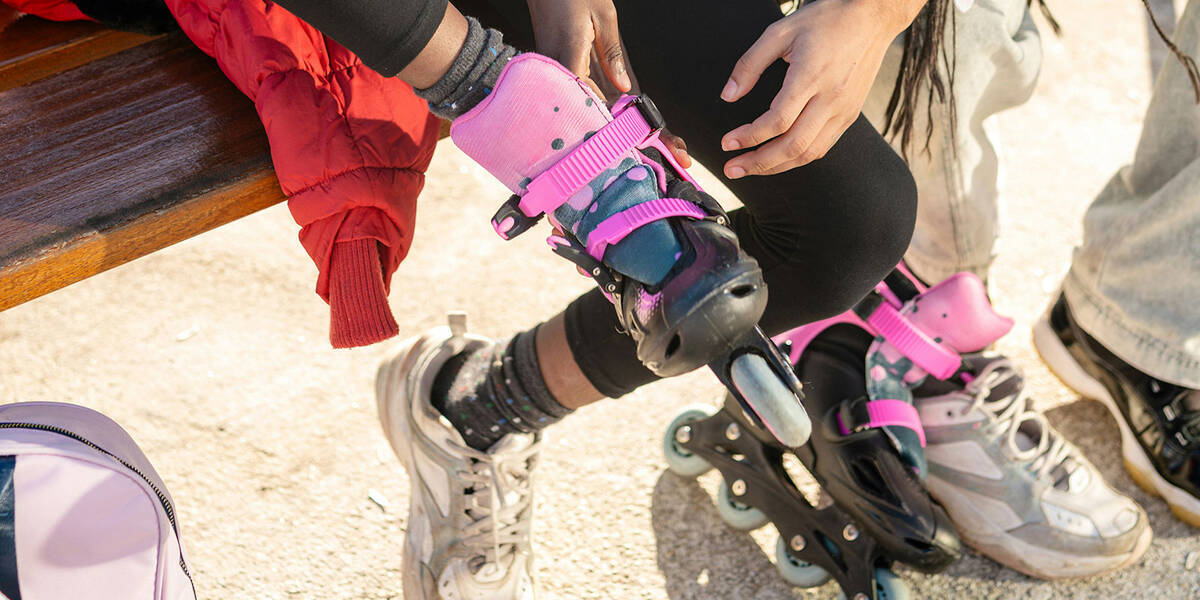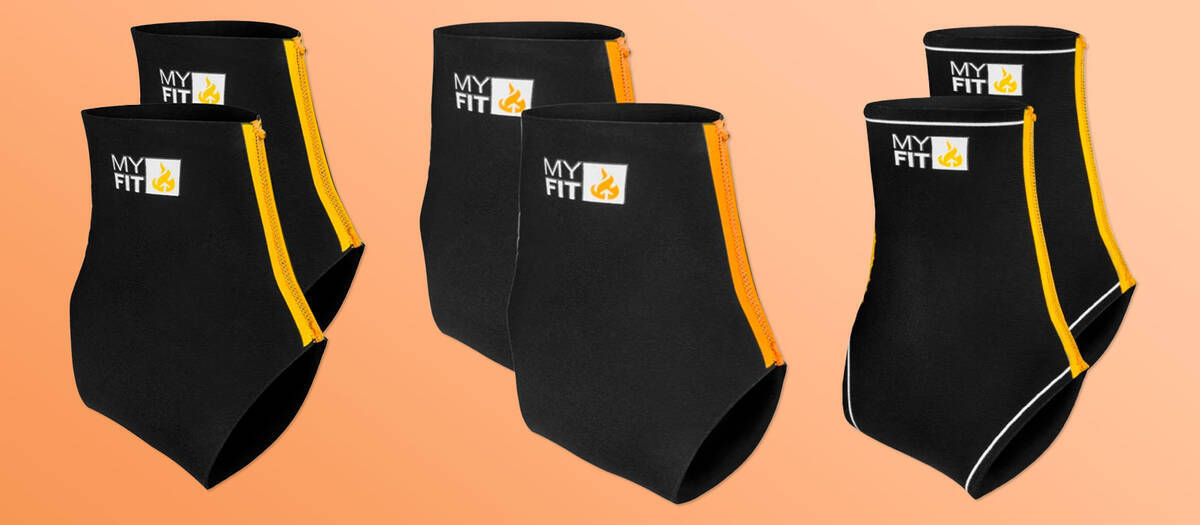Getting Comfortable in New Inline Skates (Blisters, Pain & Fit Issues Avoidance)

This article is ideal for those who have just fastened a new set of inline skates, whether for leisure or exercise. It gives valuable insights for newcomers who might experience unease, blisters, or discomfort in the feet and ankles, as well as for those at an intermediate level upgrading to new boots looking to facilitate the break-in phase and achieve comfort more swiftly.
So you've acquired your first set of inline skates and are eager to begin your skating adventure. Yet, upon trying them, panic ensues as they appear overly tight and press on tender areas. Fear not, we're ready to assist! We will discuss how to wear in new inline skates and navigate the initial phase with minimal fuss.
Overview
Overview
Why Do New Inline Skates Cause Discomfort?
The excitement over your new inline skates is understandable, yet initial discomfort is quite normal. This is due to the stiffness of the boots, your feet accommodating the new boot's form, and your muscles not being habituated to the skating movement. These elements can lead to initial discomfort as your body grows accustomed to the skates.
- Typical: slight pressure on toes or ankles, or minor soreness that diminishes after brief sessions.
- An issue arises when there is: piercing pain, constant pressure, numbness, or blisters that persist, indicating the skates may not fit properly.
Pro Tip: You cannot return your inline or roller skates for a different size if they show wear. We advise testing the skates indoors or on a clean area. This should allow you to determine if the sizing is correct.
The sections below will further discuss fitting specifics.
Check Fit First: Ensure Boot Suitability Before Breaking In
Prior to breaking in your new inline skates, confirming the fit is crucial. Boots that are overly snug can lead to pinching, blisters, or hindered circulation, as opposed to loosely fitting boots that permit foot movement, resulting in soreness and instability. Securing the proper fit initially will enhance the comfort and enjoyment of your skating experience.
Advice for verifying fit:
- Heels and ankles: Your heel should fit snugly without lifting as you walk or skate.
- Toes: A small amount of wiggle room should exist. Your toes should not feel cramped at the front.
- Width: The boot should fit snugly across the midfoot without being excessively tight.
- Lacing and fastenings: Ensure the tension can be evenly adjusted. Uneven pressure tends to cause "hotspots" and discomfort.
Getting the correct fit at the outset will ease the breaking-in process and ensure pain-free skating sessions. A gentle reminder: no amount of wearing in will correct an ill-fitting boot.
Steps to Wearing In New Inline Skates
After confirming the fit is suitable, you can begin to wear in your skates! The initial sessions focus on helping your boots and feet adjust comfortably, and here are a few things to take into account:
- Socks: Opt for moisture-wicking socks; avoid cotton to prevent blisters.
- Lacing correctly: Initially loosen, tighten the ankle strap moderately.
- Commence with short sessions: Skate for 20 to 30 minutes on smooth terrain. Gradually build up the distance.
- Be mindful of your stance: Keep your knees slightly bent to prevent toe gripping.
- Optional customisation: Certain liners allow for heat-moulding for a personalised fit.
- Expect minor discomfort: Hotspots or small blisters are typical. Persistent pain = reassess fit.
Pro Tip: Generally, users begin to feel comfortable after approximately 5 to 10 miles of inline skating. Exercise patience, as both your skates and feet will adjust with consistent use.
Preventing and Managing Blisters & Foot Pain

Blisters frequently appear on ankles, heels, tops, or sides of feet, often due to improper boot rubbing, unsuitable socks, or incorrect fit. Fortunately, with some simple care and methods, you can keep your feet in comfort and enjoy extended, pain-free skating.
An initial measure is using ankle sleeves or neoprene footies. These provide cushioning for sensitive areas, minimising friction. It’s important your laces and straps are just right, securing your foot yet avoiding pinching tightness. Should foot slippage occur, consider adding or swapping insoles to improve fit and stability.
While skating, take brief pauses to inspect your feet. It’s quick, but it can keep a minor hotspot from evolving into a full blister. Carrying blister pads or tape is advantageous to address problem areas before they hinder you.
If a blister forms, address it right away. Allow your feet to recover, treat them correctly, and verify your boot fit and socks to prevent reoccurrence.
With proper fit, protective steps, and attentive care, preventing painful blisters and enjoying seamless skating is possible.
Typical Timeline for Breaking in New Inline Skates
Most participants find their boots starting to feel more comfortable after 2 to 3 sessions or around 5 to 10 miles. However, the experience may differ based on boot type, brand, liner, foot shape, and use.
If any discomfort lingers beyond a few weeks, it signifies an issue. The boot may have an incorrect width or length, or simply not be compatible with your foot.
Suggestions to ease the wearing-in period:
- Begin with shorter sessions.
- Use indoor walking to soften liners.
- Gradually increase distance and intensity.
With patience and careful perseverance, your skates will start to feel much more pleasant, allowing you to indulge in longer rides without discomfort.
Shortcuts for Breaking In

Consider these straightforward shortcuts to make your new skates comfortable more quickly:
- Thicker or technical socks: Minimise friction and enhance boot fit.
- Heat mouldable liners or boots: If your skates include heat mouldable liners, adjust the fit as needed.
- High-quality insoles: Increase support and comfort.
- Wear skates indoors: Soften liners preceding more extended sessions.
Common Enquiries
Why Do My Feet Ache While Skating?
Foot pain frequently results from inadequate fit, poor lacing, or technique issues. For ongoing discomfort, start by reviewing the fit. Once sizing concerns are addressed, examine your lacing method. If heel lift occurs while skating, it likely leads to ankle blisters, possibly improved by adjusting and securing the laces. Poor technique can also impact comfort. Explore our guide:
Is Tightness or Pain Expected with New Skates?
A snug feel is routine during wearing in, but sharp pain or numbness should not be present. Toe mobility should be possible, but the foot should not move too freely within the skates.
How Many Sessions or Miles Are Required to Wear In New Inline Skates?
Typically, skaters notice improvement after 2 to 3 sessions, or around 5 to 10 miles. Circumstances vary, so there is no definitive answer.
How Can Blisters Be Prevented While Skating?
Utilise proper socks, ankle sleeves, or footies, ensure suitable boot fit, and pause to inspect your feet. Ignoring blisters, allowing them to heal, then returning to skating without taking preventive steps, often results in new blisters. Follow this advice:
- Rule out any size issues – uncomfortable skates won’t magically conform with further use if they’re too small.
- Review lacing to ensure skates are properly tightened and heel lift is avoided.
- Consider using ankle sleeves.
What Actions to Take if the Fit Still Feels Incorrect After Wearing In?
Re-evaluate boot size, width, and socks. Continuous discomfort signifies an improper fit.
Do Insoles Contribute to Comfort or Fit in Skating?
Indeed, quality insoles enhance arch support, lockdown, and comfort overall.
Discover more about insoles for inline skates in the video below, where Jeppe discusses insoles, shock absorption, and more.
Are There Any Rapid Break-In Strategies?
Brief sessions, indoor walking, and wearing skates around home can aid.
Is It Fine If My Toes Touch the Boot Front?
Light contact is acceptable, but pressure or discomfort is not.
Is It Advisable to Skate for Hours in New Boots?
Not advisable. Gradually extend your skating time during the break-in period.
